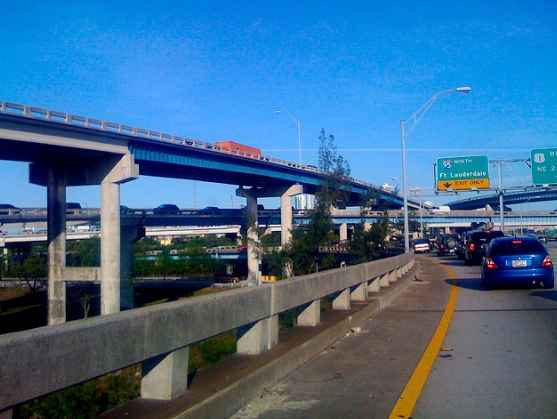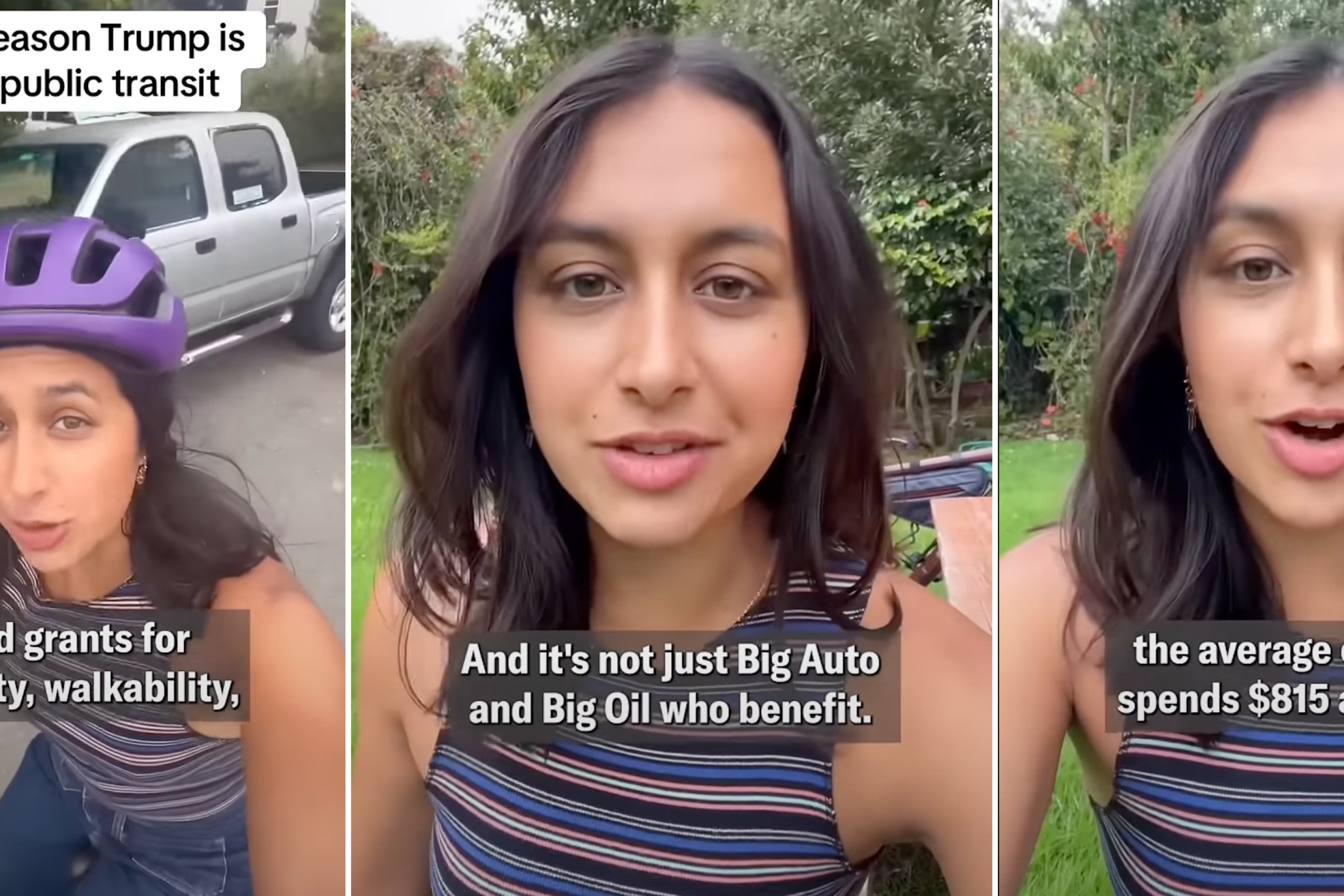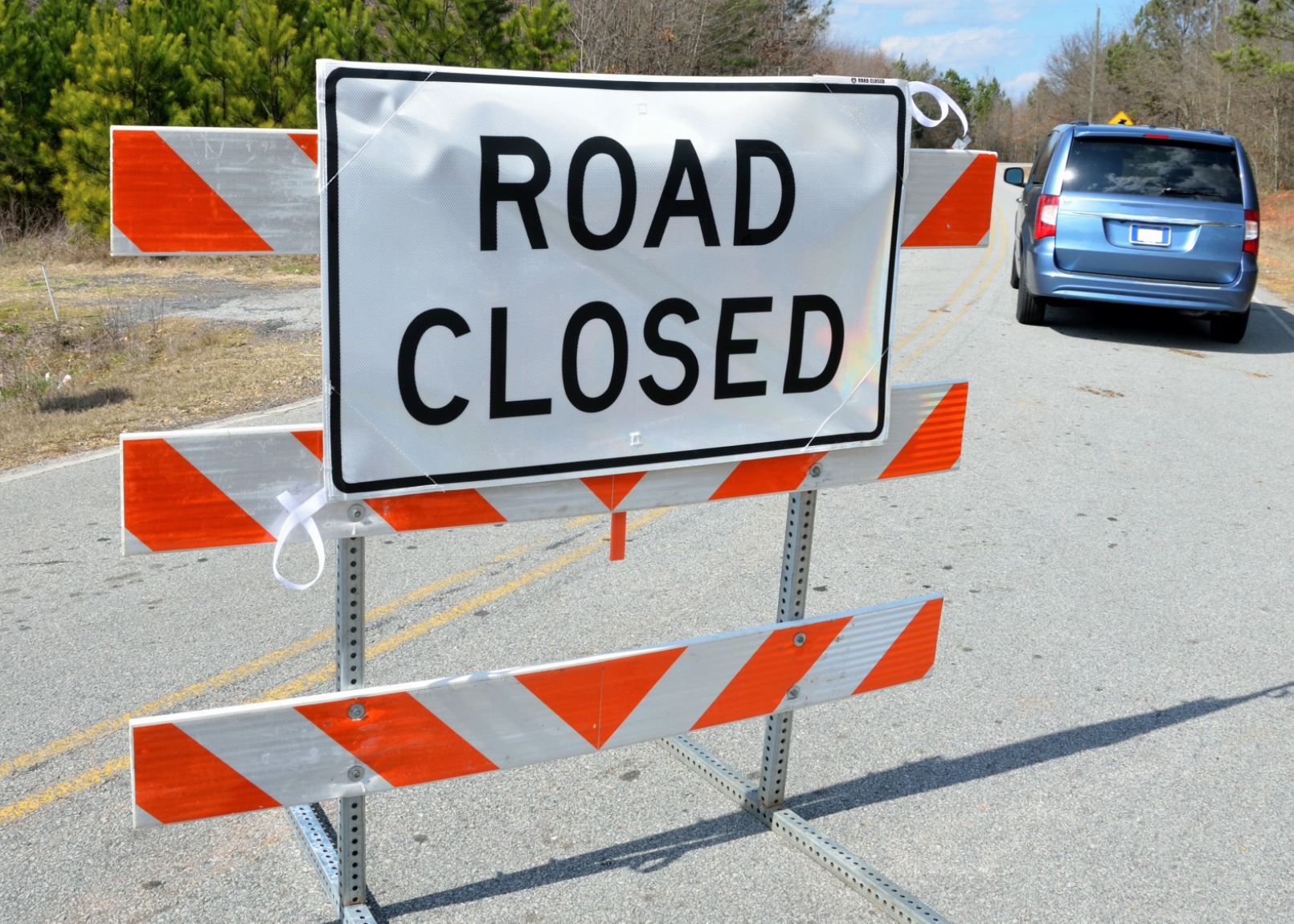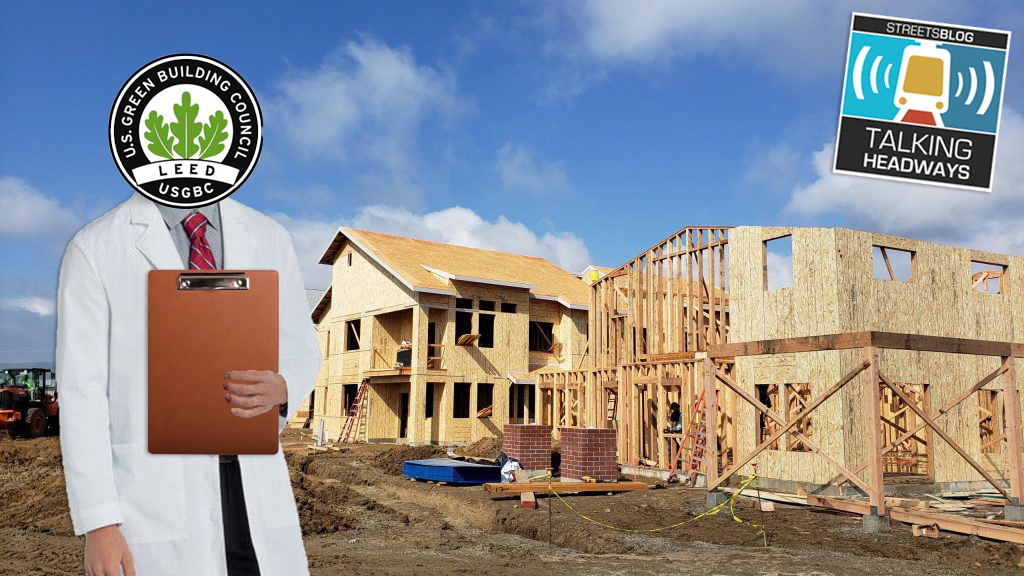Crossposted from City Observatory.

If you read the news, you’ve probably seen reports about “congestion costs”: how much American commuters pay, in money and time, when they’re stuck in traffic. It’s fair to say that we’ve got some issues with many of these reports—but they’re popular nonetheless, perhaps because they help quantify a frustration that so many people can relate to.
That got us thinking: What if we could quantify some of these same issues from a city-friendly angle—measuring not the cost of congestion, which suggests that the solution is to build highways until every car is free on its own field of asphalt (a solution, by the way, that we know doesn’t work), but the cost of sprawl: of patterns of building that make people travel longer because their home, work, and other destinations are so physically far from each other?
So this week, we present the “Sprawl Tax”: what it is, how much it costs us, and what we can do about it. We found that the in time and money, American commuters have to pay a sprawl tax of over $107 billion dollars a year in the 50 largest metropolitan areas—nearly $1,400 for the average commuter. That includes the costs of the 3.9 billion additional hours American commuters spend traveling to and from work per year, or about 50 hours per worker.
The method
But first, how did we get those numbers?
To figure out a metropolitan area’s sprawl tax, we began with statistics on the average commute length, in miles, as calculated by the Brookings Institution for their 2015 report, “The growing distance between people and jobs in metropolitan America.”
Our next task was to estimate how much shorter daily commutes might be if metropolitan areas were less sprawling. We know that commute distances vary by metropolitan size (more populous areas tend to have longer average commutes), so we stratified our metropolitan areas into groups for the purposes of estimating how much shorter commutes might be if the regions were more compact. We assigned each metropolitan area a “benchmark” commuting distance based on its population: six miles for areas with 2.5 million or fewer people, and 7.5 miles for areas with more than 2.5 million people. These levels were chosen to ensure that each metropolitan area’s benchmark was within 0.5 miles of the real average commuting distance of another metropolitan area with similar or larger population—that is, a region with a similar population but less sprawl. Both benchmark levels are below those of the metropolitan areas in their category with the shortest average commute to reflect the reality that even the most “compact” American urban regions contain a large amount of sprawl.
The difference between the real average commute length in each metropolitan area and its benchmark became its “excess commuting distance.” We then multiplied this distance by 58.1 cents, the AAA’s estimated cost per mile for a mid-range sedan. Doubling the result gives the total sprawl tax per worker, per day, including both journey to and return from work. Multiplying by the number of workers according to the 2014 one-year American Community Survey figures gives the total sprawl tax per day for the metropolitan area. Finally, multiplying that number by 261 workdays per year gives the total annual sprawl tax for the metropolitan area.
How it adds up
Adding together the sprawl tax for each of the largest 50 metropolitan areas gives $48.5 billion dollars per year—or nearly $630 for every commuter annually. The financial aspect of the sprawl tax varies from $34.7 million in New Orleans to $4.7 billion in Dallas. In per commuter terms, the region with the biggest sprawl tax is Atlanta, where sprawl costs the average commuter more than $1,600 a year. The city with the smallest per capita sprawl tax is New Orleans, at just $60.66 per commuter per year.
But these figures reflect just the out-of-pocket costs of owning and using cars. What if you take time into account? After all, the longer trips forced on commuter by sprawling cities cost money, but they also cost time. Using a similar methodology, we calculated an “excess travel time” index, applying average travel speed for each metropolitan area to its benchmark commute distance, as opposed to its actual commute distance.
The result? In the 50 largest metro areas, sprawl costs commuters 3.9 billion hours per year, or more than 50 hours per year per commuter. That means sprawl makes the average commuter spend over two entire days per year traveling to and from work unnecessarily. The worst offender? Atlanta, where the average commuter loses 112 hours per year, or over four and a half days. In the metro area that performs best, New Orleans, commuters lose just over seven hours per year.
Sprawl tax versus congestion costs
Of course, this is almost by definition an underestimate, since it only counts journeys to work. But most travel is not to or from work, and so adding trips to other destinations—schools, grocery stores, doctor’s offices, and so on—would add significantly to the total. Nor does the sprawl tax measure the other real costs of longer commuters: more pollution, worse physical and mental health outcomes, and the medical and human costs of car crashes.
But even so, the sprawl tax rivals common estimates of congestion costs. To make the sprawl tax more comparable to estimates of congestion costs, which measure time lost in money, we converted our own time costs to dollars. At $15 an hour, that adds up to $58.7 billion. Add that to direct monetary costs ($48.5 billion), and you get $107.2 billion in total sprawl tax in the 50 largest metropolitan areas.
In contrast, INRIX estimated the congestion costs in all metropolitan areas at $124 billion in 2013. Given that only about half of all Americans live in the 50 largest metro areas, it seems likely that if the sprawl tax were calculated for the entire country, it would reach or exceed INRIX’s congestion cost estimate—even though it counts only a small fraction of the total costs of sprawl.
In other words, urban sprawl, and the longer commutes it makes necessary, is a major source of financial and time costs for American workers -- and everyone else who has to travel in our sprawling metropolitan areas.
But it’s also a major drag on quality of life. Next, we’ll tackle that side of the sprawl tax.





